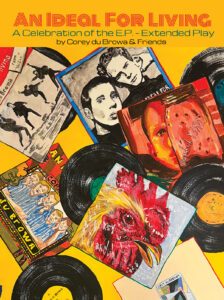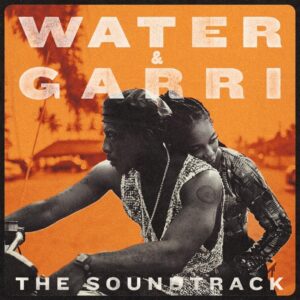08/03/20
On July 31st, 1970, the Royal British Navy ended their daily ration of rum for all active sailors on ship. At 6 bells (11:00am) upon the call of ‘Spirits Up! sailors lined up and got their last daily ‘tot’ of rum. The day was referred to as Black Tot Day and ended one of the oldest military traditions in naval history.
Drinkable water was always one of the biggest obstacles for any long naval voyage. Water quickly became brackish and full of bacteria, and storage vessels that did not harbor bacteria were not readily available, so some form of fermented liquid was needed. Beer (ale) was the obvious choice for centuries. Even the Pilgrims carried beer to drink on their way to the New World – bringing 42 tons with them on the Mayflower for the voyage for the 132 passengers and crew. It could be stored for months in simple wooden barrels below deck. But the beer wouldn’t last forever, so distilled spirits eventually made their way onto ships. In 1655 The British Navy switched from a gallon of beer ration per day to a half pint of rum (10 fluid ounces – called a tot – of approximately 150 proof rum), the new spirit being distilled in the Caribbean plantations from sugar cane (Fun Fact #1 – Columbus brought sugar cane to the New World in 1492, so you could say he is the father of modern rum). The British Navy had just completed a successfully invasion of Jamaica and took the island from the Spanish, and brought rum back to England.

The rum was much easier to carry, took up less cargo space, and had a long shelf life. But it was easily watered down, so when resupplying, the rum was poured over gunpowder and lit. If it held a flame, it was determined to be full strength. If not, it was considered to be ‘under-proof’ (Fun Fact #2 – that’s where the term Navy Strength comes from. Spirits under 50% – or 100 proof – will not hold a flame). Current rums that are not Navy Strength clock in at around 80 proof, which made for a drunken navy. Fights and drunkenness were common, but it was felt the daily tot kept the sailors from deserting, so it was worth the unintended consequences.
In 1740, Admiral Edward Vernon, tired of the drunkenness and impaired sailors, ordered that the rum be cut 4:1 with water before being served so that sailors would be forced to drink it right away and split the tot into two rations. One at 6 bells and one in the evening. He also added lime and sugar to help protect the sailors from scurvy. This liquid, which was not popular with the men on board, came to be known as ’grog’ – a slight to Admail Vernon who was nicknamed Old Grog by the sailors.

In the early days, the men would sometimes mix their rum ration with their beer (oh yes, they got beer too) and a little sugar and heated it with a hot poker from the fire – called a loggerhead. These pokers were always kept in a lit fire on deck and could be used to melt pitch to mend sails, or were hot enough to light the gunpowder in a cannon during a fight. This was especially useful on cold Atlantic days. The mixture of rum, ale, and sugar came to be known as a Flip. The brown ale foams up and creates a thick, creamy head. The sugar (dark raw sugar or molasses) caramelizes from the heat and give the drink an earthy, sweet undertone.
As the sailors left the ships, they took the hot flips with them, and it became common to keep a series of pokers in the Tavern fireplace as well for the warm beverage, which soon added an egg to the mix – and gave us the Colonial Flip, which you could have found all up and down the coast of the Atlantic in the American colonies prior to the Revolution.
But back to the tot. In 1969, the British Parliament decided to do away with the daily tot, which by that time had been reduced over time to a mere 2oz of rum. Apparently, a sailor could fire a cannon, or fight an enemy (who were also probably a little tanked up) but maintaining a nuclear powered vessel or operating a missile guidance system required a clear head and a steady hand. The sailors had their last ceremonial tot on July 31, 1970, then held mock funerals, complete with sailors wearing black armbands, and burying the remaining rum at sea. Ending the 315 year-old tradition.
The Colonial Flip
3 fluid ounces dark rum
2 tablespoons molasses
1 large egg
1 pint dark beer – I recommend a good brown ale, but a stout or porter work too
freshly grated nutmeg for garnish
Hot Poker Version
In a heavy mug or tankard, mix everything together. Whip the egg well just prior to adding it to the beer. If you don’t mix it well or wait too long it will separate and you end up with little pieces of scrambled egg in your beer. Not bad, but not aesthetically pleasing. Slowly lower the hot poker into the beer (you need a large glass – it will foam up and over if you are not careful). Do this sober and be careful. Once it is hot (or hot enough), grate fresh nutmeg on top and serve.
Stovetop Version
Fill several mugs with boiling water and set aside. Heat the beer in a pan on the stove until just prior to a boil. Add the rum and whipped eggs, then begin pouring the liquid back and forth between two tankards until it is rich and creamy. Pour the hot water out of the mugs and distribute the liquid. Grate fresh nutmeg on top and serve.
Next: The Gin and Tonic
AotCB-03
Instagram@architecture_of_the_cocktail
- Bill Stott
Other RUMinations in Architecture of the Cocktail:
HAVE YOU EVER HAD A REAL DAIQUIRI? by Bill Stott
The Golden Age of Cocktails, by Bill Stott
Hogo! by Bill Stott
How about a nice Hawaiian punch? by Bill Stott
“What one rum can’t do, three rums can” by Bill Stott
Yo, ho, ho, and a Bottle of Rum, by Bill Stott
Yo, ho, ho, and a Bottle of Rum – Part II, by Bill Stott
Spirits Up! Black Tot Day, by Bill Stott



